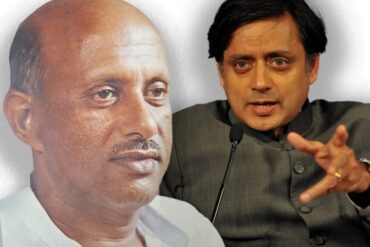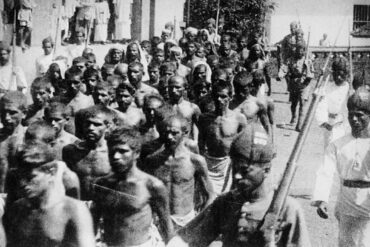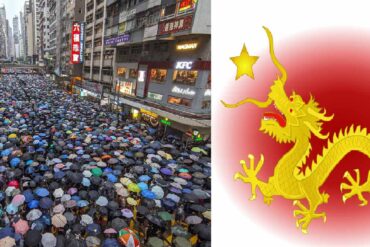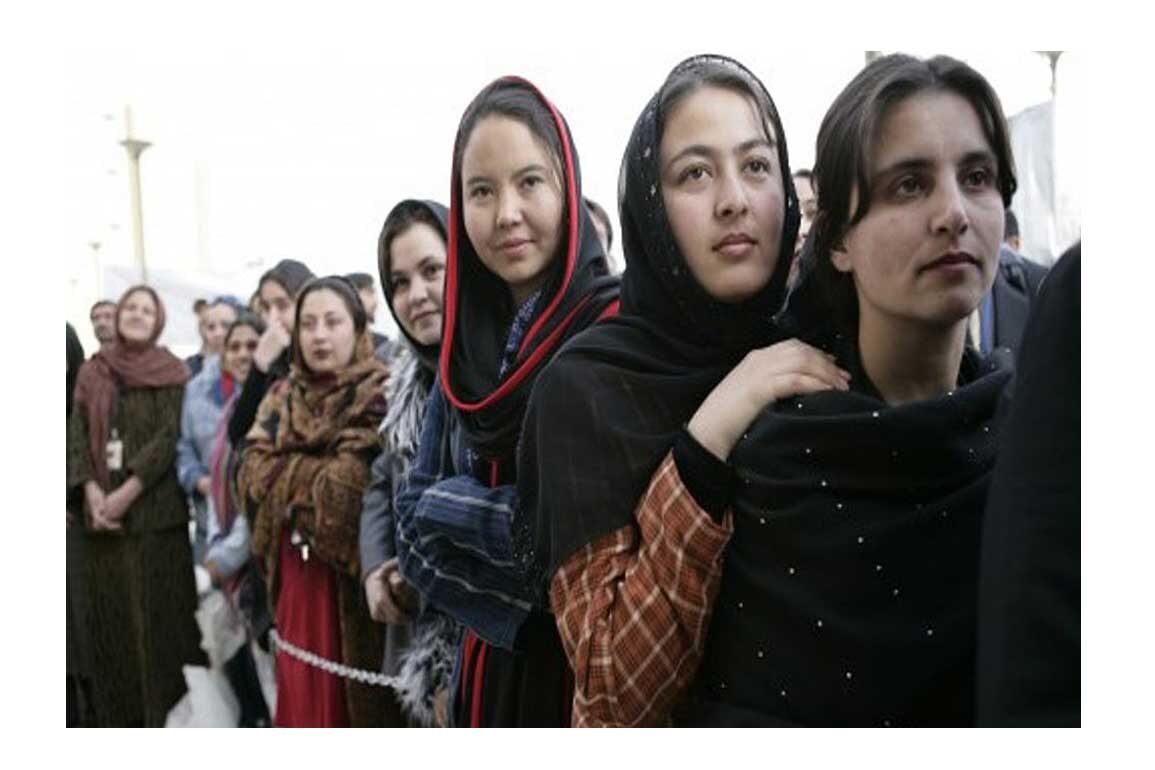When asked about India’s majoritarian tilt and the accompanying anti-immigrant sentiment, Fatima, a budding Afghan fashion designer refugee formerly based in Delhi, attributes both to a global trend. “Most countries are engulfed by right-wing xenophobia. Also, the National Register of Citizens (NRC) is inhumane because a person has the right to legally live wherever he/she chooses,” she asserts.
According to the United Nations High Commission on Refugees (UNHCR), there are 15,559 Afghan refugees and asylum seekers registered in India. Since the subcontinent’s partition in 1947, Lajpat Nagar along with other South Delhi neighborhoods have been refugee nests within the national capital. After resilient, enterprising Hindus and Sikhs from West Punjab transplanted themselves into this commercial and residential hub, Afghans fleeing conflict and oppression have followed suit since the 1980s anti-Soviet War.
Many of these Afghan asylum seekers in India are of the Shiite Muslim sect to which ethnic groups like the Hazaras belong. While the war itself had brought great disruptions to their lives, ISIS’ foray into Afghanistan and their increased attacks on Shiite mosques, schools, weddings, and gatherings has not exactly made them feel safe.
Unfortunately, the recently promulgated Citizenship (Amendment) Act does not grant automatic citizenship to minority Shiite (sub)sects of the broader Muslim majority state of Afghanistan. Although the CAA-NRC is not much of a concern for Fatima as it once was because three months ago right after the Northeast Delhi riots, the UNHCR came through in facilitating her resettlement to Australia.
Though upon her arrival, a three-week quarantine period due to the COVID-19 pandemic was nothing but a small speed bump on the road to settling into a permanent home. Because in 2013, Fatima began the first seven-year leg of her journey as a refugee when fleeing Kabul for Delhi.
The Sartorial Settler
Fatima spent her entire life in Kabul before coming to Delhi. Born into a Hazara family of six brothers and three sisters, she was always a rebel. Though as the war caught steam in the 1980s and well the 1990s, regressive elements seeped further into Afghan society especially via anti-Soviet radical warlords like Gulbuddin Hekmatyar and Burhanuddin Rabbani. Although their inability to maintain a post-war government paved the way for a Taliban takeover.
For women, the Taliban’s arrival spelled even more trouble. Reminiscing about the pre-1980/pre-jihad period, she recalls, “We, specifically women, had freedom. Schools were accessible to girls and wearing scarves was not mandatory. Mullahs selectively quoted the Hadith and Quran to justify their treatment of women. Be it the Taliban, Mujahideen, or just everyday Afghans, we are expected to cover ourselves fully. What about Imam Ali’s words of ‘lowering your gaze’ in front of women?”
Fatima and her friends would discuss Afghanistan’s problematic gender landscape and how to bring about change for Afghan females. One of these friends was a relative of vocal women’s rights advocate Noorjahan Akbar, co-founder of the renowned Young Women for Change (YWFC) Group. Little did she know that her engagement with this group would turn her into a refugee.
The YWFC organised a fashion show to showcase a collection stitched together by local women. Some of the girls who modeled did so without their parents’ knowledge. While only international media was invited to prevent local conservative outrage, ironically a BBC journalist’s spin painted the show as scandalous. Local media caught wind of this which resulted in barbs and accusations against Fatima and the YWFC. Harassments and threats also followed.
Some of those allegations included “Why is this organization named ‘Young Women for Change? Why not ‘old women for change’?” to “You are using American funds to convert our Afghan women into Jews and Christians.” Officials from the Ministry of Women’s Affairs (MWA) even raided the YWFC office. Whether it was checking through the organisation’s mattresses at the offices or the fact that they named their internet café after Sahrgul — a child bride who was tortured by her family — MWA personnel would harass them. A sympathetic anti-mujahideen Professor tried to get the media to project the fact that Fatima had no agenda to proselytise. This too was in vain.
Due to the blacklisting of YWFC along with instances of her being followed and stalked, the adroit designer knew it was time to leave when her family expressed further disapproval of her scarf-less and sleeveless attire. Her next stop was Delhi, a pivotal character in India’s saga as a safe haven for refugees.
Delhi, A City of Refugees
“India isn’t a signatory to the 1951 Refugee Convention,” mentions Fazal Abdali, a Senior Consultant at the Human Rights Law Network’s (HRLN) Socio-Legal Information Center (SLIC), which provides legal assistance to refugees under the High Commission on Refugees mandate. He elaborates, “Going to a signatory country grants more rights to work, purchase property, and gain a formal education to the refugee to a greater extent than a non-signatory country.”
“Though not every Afghan can afford to move to such countries like Canada and England,” he adds. Therefore, many Afghans fearing for their safety enter India on a temporary visitor visa, which the Indian Embassy issued to Fatima. Of course, overstaying beyond the visa’s expiry date means deportation — a death sentence for many refugees and asylum seekers. However, to legally be able to stay in the country after that is quite the process.
After arriving in India, the asylum seeker must register with the UNHCR office in Vasant Vihar to get an asylum seeker card. Then s/he must undergo a process of refugee status determination (RSD). Fatima came to Delhi as an asylum seeker. After a screening process with the agency’s RSD team, she was issued a refugee card.
Information from the application forms and an in-person interview determine the extent of danger face back in their hometown, their inability to move around freely and safely in their country, and etc. determine whether the asylum seeker gets the card or not. The team also has the unenviable task of scrutinising whether an applicant is abusing the process as many apply and then returning to Kabul.
The time in which a decision regarding RSD is made spans from one month to two years. Naturally, a longer wait period entails more uncertainty about whether an asylum seeker will remain on Indian soil beyond a certain point. However, the prospect of being a UNHCR-recognised refugee — with some access to the national legal system, government healthcare system/schools, and the right to earn wages — makes it worth the wait for some. That is if their visit or medical visa does not expire or if their application is rejected.
Yet acquiring the sometimes-elusive refugee card is just the tiniest tip of the iceberg. Such trials and tribulations only add to the woes of Afghans in Delhi, many of whom who have been traumatised due to the conflict back home. There is also a shortage of resources for addressing the mental health of refugees as they navigate through this constant state of uncertainty.
A State of Perpetual Uncertainty
While the UNHCR refugee card prevents deportation and is relatively easy to renew, getting a long-term visa is another uphill battle. As per India’s administrative policy, refugees with that card can only apply for long-term visas. For some of the younger refugees, the long-term visa — one of the few routes to citizenship — does not seem obtainable especially with the CAA-NRC.
“There is little to no likelihood of getting citizenship. Without permanent citizenship of a safe country, it becomes difficult to concentrate on schoolwork with the prospect of deportation or detention hanging over my head,” deplores Haleema. This uncertainty remains a dominant factor in refugees’ lives globally, not just Afghan Muslim ones in India.
Fazal Abdali also sheds light on the negative consequences of a lack of a formal framework for dealing with refugees. “This non-existent framework spells difficulty for their status to be recognised by authorities. Hence, they are sometimes viewed as illegal immigrants. This population handled by the HCR faces probable deportation or concentration camps. Discussing the effects of the NRC coming to Delhi, Abdali succinctly states, “It will be chaotic not only because of Afghans, refugees, or XYZ, but for Indians too,” he exclaims.
Plus, Fatima also deplores that many landlords and facility providers outside refugee enclaves like Malviya Nagar and Lajpat Nagar do not accept a refugee card as a legitimate ID. Clearly, there remains to be work done to attune locals — from landlords to law enforcement — outside those aforementioned areas about UNHCR structures in the country and the validity of agency documents for asylum seekers and refugees.
Once a Fighter, Always a Fighter
To some Delhiites, navigating the bylanes of Lajpat Nagar and Bhogal for kebabs and exotic spiced curries make for exciting adventures. Afghans, for whom these rustic alleys and ethnic enclaves offer refuge, have steered through rough waters since they uprooted themselves from their homes.
As Fatima adjusted to a new country during her first two years, she missed home despite all that had transpired. She spoke little English upon arriving in Delhi. Luckily, courses from educational NGO Bosco (UNHCR’s implementation partner for basic schooling), HRLN-SLIC, the British Council, and fashion/beauty sessions from the UNHCR helped her learn one of India’s lingua francas as she honed her stitching craft.
Although she maintains that sexual harassment is more prevalent in Afghanistan, India’s own gender climate isn’t spotless. She appreciated the autonomy she has over her attire but life was not all roses. Her stitching talents got her a job at a textile company in the National Capital Region. But the organization’s apparent inability to pay her on time prompted her to seek more financially fruitful avenues. She also reveals, “Sometimes Afghan women are paid a fraction of what Indian employees earn. Plus, some supervisors ask for sexual favors in return for basic remuneration.”
But discussing harassment or abuse is taboo. Not just because of patriarchal Indian norms, but also due to the vulnerable position of refugees. The fear of deportation over even the smallest mistake or angering certain officials keeps them from speaking up. “I ensure that I don’t get into altercations with locals by just sticking to my routine of going to work, the gym, and then home. This is what life has been like all these years,” says Fahad, another Delhi-based refugee and Kabul native.
Fatima is not one to remain mum about such incidents. Above the tracks of the Lajpat Nagar Railway Station is a Foot Over Bridge referred to as the “Phaatak,” a common spot for muggings. Around 6 pm she was crossing the bridge with two kids when a man started yelling at them in Hindi—despite her saying that she would complain to the police. She held on to the guy’s shirt as he continued to assault her to prevent harm to the children who were in tears.
The people at SLIC were very helpful in discussing legal options on merely hearing about the incident. They then advised her to file a FIR. When she went to file a complaint regarding the harassment she faced at a police station, the inspector scoffed, “Afghan ladies roam around with guys and are prostitutes.” Fatima responded, “One, talk to me with some courtesy. Two, with prostitution also prevalent among Indian women too, don’t you as society members create circumstances in which it flourishes?”
Delhi’s Afghan Refugees, more than just exotic species of ethnic enclaves
With the help of supportive Indian feminist activists, she got small orders for a Santa Claus outfit for a Christmas function, table cloths, and covers in 2016. Two years later, she began stitching sarees and scarves for exhibitions. She ran her own mini-boutique with a fellow Afghan refugee who is adept at embroidery. Their sartorial creations are hits with Delhiites, Afghans, and some foreigners. Nevertheless, Fatima’s activist never drowned in the sea of survival and sustenance.
Besides going to the police stations with women who were subjected to physical and sexual harassment for moral support, she organised Yoga sessions at her abode, workplace, or even in public parks. Fatima believes being busy enables people to not think about hardships. She says, “I used to get a lot of women together. We meditated and we made food. I called them to sing, cry, and laugh especially in the outdoors. Even if they wanted to come to cut onions or vegetables for their meals, that’s great. It is important to get fresh air and company.”
The legal NGO ARA Trust provides Afghan refugee women a platform to utilise their traditional embroidery talents not only for livelihood but similar therapeutic remedies, for their experiences of uprooting themselves from their country. In spite of such adversity, Fatima never looked back with her profitable mini-boutique.
Back in Afghanistan, in spite of the US’ “peace deal” with the Taliban, the increased infighting and instability is spelling trouble for the security situation. Besides the attacks on the Kabul gurdwara and the maternity ward, a Taliban at the helm of affairs does not bode well for women. Many female asylum seekers and refugees, for whom a volatile Delhi is relatively preferable to Kabul, shudder at the thought of returning to such a milieu.
After the Jamia, JNU and Northeast Delhi violence subsided, the capital would later go onto become a laboratory for pandemic mismanagement during the COVID outbreak. Thus, Fatima’s resettlement to Australia could not have been more well-timed.
Closer to a Permanent Home?
Leaving her adopted refuge of Delhi, was nonetheless tough. After all, Fatima helped build an ecosystem to empower women despite her circumstances as a refugee. Though when she set out to do the same back in Afghanistan, a journey of exile followed.
Being a signatory to the 1951 Refugee Convention, Australia is required to “as far as possible facilitate the assimilation and naturalization of refugees.” Although despite the country being adherent to this treaty, the path to citizenship is not without hurdles. But in Australia, she faces less of an uphill battle in finally securing what every refugee yearns for — the permanent shelter and protection of a state. That too, not as a person under a UN covenant or a UNHCR framework, but a bonafide citizen.
Pseudonames have been used for all the Refugees mentioned in the article for their safety and protection







